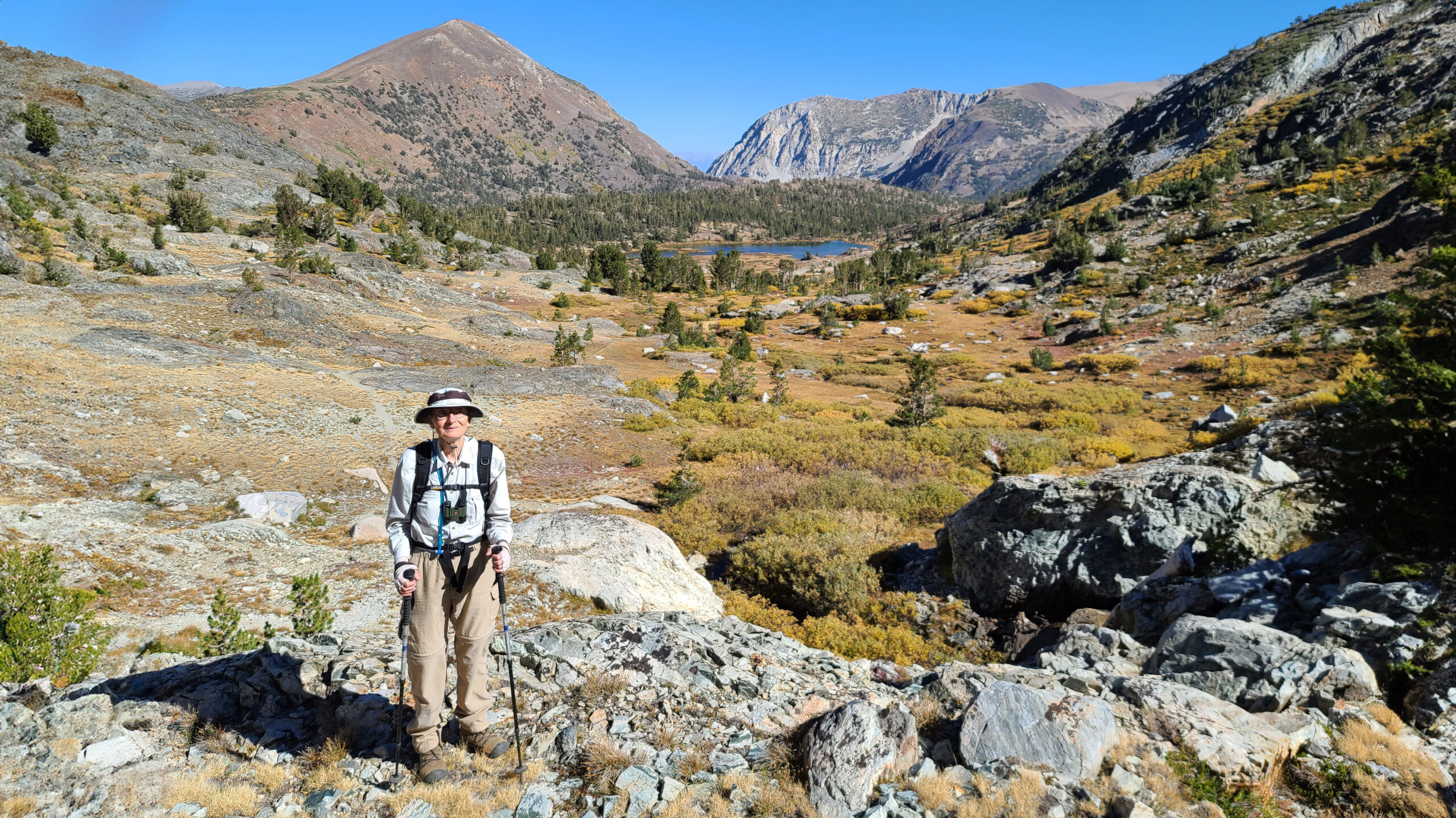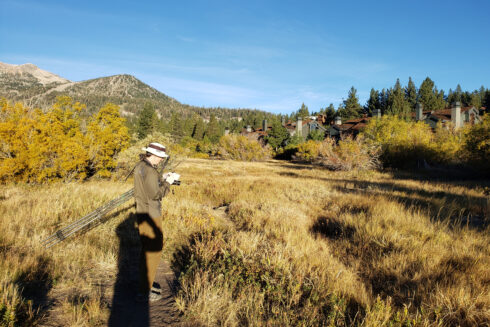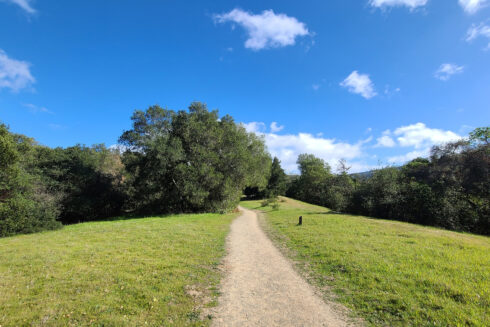
Did you know that in addition to over 2,000 volunteer eBird reviewers, there are over 900 hotspot editors around the world? Hotspot editors are vital to enhancing the utility of eBird for everyone. They ensure that hotspots are accurately named and plotted, devoid of duplicates, and do not inadvertently lead birders onto private property. Those hotspots are available to explore on eBird web at the hotspots page and under any region page (e.g., San Mateo County, California). You can also explore hotspots on eBird mobile and get directions to navigate right to them. This global collection of shared birding locations is thanks to the efforts of hotspot editors (learn more about eBird hotspots). The dedication of our hotspot editors is deeply appreciated by the entire eBird community.
The eBird Reviewer Spotlight helps you get to know eBird’s volunteer reviewers and editors a little better. These articles are written in the volunteer’s own words and reflect their experiences as reviewers, editors, eBirders, and members of the birding community. In this spotlight, Jane Tatchell, hotspot editor for 22 regions around the world – all the way from the United Kingdom to the Maldives and Falkland Islands – describes how she became an eBird hotspot editor and her efforts to maintain updated hotspot locations for eBirders.
eBird Reviewer Spotlight: Jane Tatchell
I’m an ex-pat Brit living in California for over 20 years. I lived in Australia, Egypt, and multiple East African countries as a child, where I always noticed the birds, though I was more into insects and plants at the time. Nonetheless, I had my favorites: Crested Pigeon in Australia, Eurasian Hoopoe in Egypt, and Kori Bustard in East Africa.
How did you become an eBird hotspot editor?
I volunteered to work on Kenya hotspots in early 2011 after noticing duplicates and typos. The backlog for the United Kingdom (UK) was visible, so I volunteered for that too. eBird had gone global in 2010 and had been focused on the Americas up until that point, so the reviewers and hotspot editors were only beginning to become active elsewhere . I had great assistance and mentorship from Michael Bowen to clear the UK backlog before the Great British Bird Fair in late summer 2011.

The Mammoth Lakes area in California’s Sierra Nevada Mountains features beautiful scenery as well as some of Jane’s favorite birding hotspots; here she is birding Snowcreek Meadow Preserve.
What work do you do as an editor? What is the difference between a hotspot editor and a general eBird reviewer?
An eBird reviewer is skilled and knowledgeable about the birds in their review area, whereas a hotspot editor doesn’t have to be such a good birder. They need attention to detail and a willingness to put in the effort to make sure eBird is as useful as possible to its community.
The process of accepting a new hotspot starts with looking at the suggested location. The editor uses a similar interface to the one everyone has in their My Locations page under My eBird.
I have to check quite a few things before I’m certain that the suggestion is a good candidate for a hotspot. First, does it duplicate an existing hotspot nearby, or could it be a sub-location of a larger nearby hotspot? Is the location actually someone’s home – that’s usually not a good hotspot, unless they have a rarity coming there, and they’re happy to have visitors to see it. Next, how many checklists are there, what birds were seen, and what is the distance and duration of the checklists? These last items can rule out a hotspot if the distance and duration don’t make sense – 14 hours and 50 miles on a checklist for a small city park show that the checklist is a “day list” and not just from that location. Are there mistakes in the spelling or coordinates, such as American spellings for UK locations, or latitude and longitude reversed or with the wrong sign?
If all these checks are good, I need to make sure that the hotspot is in the best position and has the best name. The latter needs research, which involves checking some or all of the following: various mapping sites, birding sites, management agencies, official designations, historical changes to, or sadly from, reserve status. Finally, is the general position good, or should it be moved a bit (or even a lot!)?
And after all that, there’s one more step I do: I always send an email to let the person who suggested the hotspot know what I’ve decided.
I understand that you’ve done extensive editing in the UK, Ireland, and across Africa. How did you come to work in such geographically distant regions?
A decade ago, there was much less eBird activity, so it was easy to take on extra territories. There was a lot of duplication in the backlogs, so clearing those wasn’t as much effort as it looked at first sight. I volunteered for Ireland in 2012 when I noticed that it had no hotspots at all. I continued volunteering for more areas local to the UK, such as the Isle of Man, Jersey, Guernsey, and Gibraltar. I briefly worked on Costa Rica, which I’d visited on vacation, until the local team took that on. I returned to Kenya work in 2013 and volunteered for more African countries later that year (mostly ones that British people visit).
Then I broke my leg in 2017, so I was housebound. With time on my hands, and a desire for vicarious world travel, I volunteered for lots more.
Why are hotspots important features in eBird? What criteria do you look for in deciding whether or not to elevate a location to hotspot status?
Hotspots help eBird users work out what are good places to visit. If you’re going to an area to see a particular bird, the species range map is a great tool, but a hotspot tells you what else is around, without having to look through multiple separate species maps. Note that the color coding of the pins on the Explore Hotspots map shows how many species have been seen at each hotspot.

Great Horned Owl © Jane Tatchell / Macaulay Library
I have two main criteria for deciding on a hotspot: Is it a “good” place? Will multiple eBird users visit the location? Often, these criteria coincide, but not always! “Good” is pretty subjective. A small urban park is an oasis to birds and birders alike, so that’s good. A coastal saltmarsh is quite different, with less obvious boundaries, but also good. Nature reserves are, by definition, good! General countryside locations need a bit more justification to make sure they’re likely to be visited regularly.
The High Seas, which I also manage the hotspots for, are rather different. There are few obvious distinctive areas and distances can be huge. A good hotspot location would be a seamount, or underwater mountain, where prey are concentrated and seabirds can be abundant.
Can you explain the different ways that locations become hotspots?
As well as the main way I create hotspots, there are a few others.
Stakeout locations for rarities are hotspots that need to be created quickly before too many private locations appear for the same bird.
Some countries had very few hotspots when I became responsible for them. I created hotspots for parks and reserves in those countries based on available online lists, so that they were ready when eBird became popular in the area.

Coal Mine Ridge, in the San Francisco Bay area of California, is one of Jane’s personal favorite hotspots to go birding.
What challenges are associated with your work as a hotspot editor?
There are day-to-day challenges, such as names that need improvement, erroneous plotting, or hotspots with no checklists. Less common is learning too late about stakeout hotspots – for these, I need to liaise with reviewers better.
Then, there are the uncommon challenges, such as when a prolific birder joins eBird and suggests all their favorite locations from a lifetime’s birding all at once! A few years ago, I had a similar project, to add the locations from the London Bird Club’s gazetteer as hotspots. That was huge, taking many days of non-stop effort!
What can eBirders do to help the review process (generally, but also specific to hotspots)?
Do check for existing hotspots before suggesting a new one, using My Locations in eBird. You can use the Merge option to see if there are already hotspots nearby. You can also clean up an automatically generated name, by removing unnecessary stuff like the country name, state/province, county name, and coordinates. Hotspots in non-English-speaking areas should be named using local script followed by the English name in parentheses; if you’re familiar with the language, adding the name in local script is a big help. If you’re just visiting on a trip, it’s fine to leave that off – I can generally research it myself.
And, to help my reviewer colleagues, if eBird flags a species as a rarity that needs a description, describe the bird you saw, not just where it was or what it was doing!
Is there anything else you’d like to share?
I always communicate with eBirders about their suggestions. That way, I gather local contacts and expertise, which I can use for advice later. I plan to check hotspots in non-English-speaking areas to re-order the names with the local language first rather than second. When local volunteers arrive, I hand over responsibilities to them; I don’t work in their areas unless they have a backlog (and I don’t!), but I do check with them first.
I have a bucket list plan: re-visit all countries I’ve been to in the past, and visit all countries I’m responsible for! That’ll be quite difficult for Clipperton Island!
